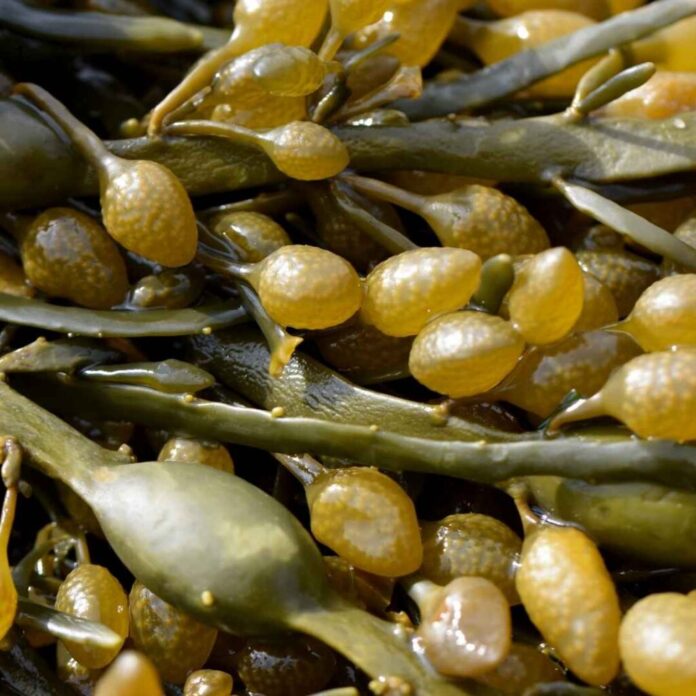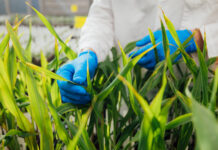Algae based biostimulants are emerging as a widely used strategic tool to improve and enhance crop yields. Derived from brown, red and green algae, these products are increasingly valued for their ability to improve crop growth and resilience. These products not only optimize plant growth and health, but also improve nutrient use efficiency and abiotic stress tolerance, critical for meeting current and future agricultural challenges.
However, beyond their known benefits, a report by the European Biostimulants Industry Council (EBIC) reveals fundamental aspects about algae extracts that influence the quality of biostimulants using them and their efficacy in the field. In this article, we pick up three key aspects: extraction method, mechanisms of action and sustainability.
1. The importance of the extraction method in the quality of marine algae based biostimulants.
The extraction process of active compounds from seaweeds is crucial for the efficacy of biostimulants. The different extraction methods directly influence the quality and concentration of the bioactive compounds present in the final product, which impacts its effectiveness.
For example, alkaline extraction of brown algae such as Ascophyllum nodosum has been shown to be particularly effective in releasing polyphenols and other beneficial compounds that enhance plant resistance to abiotic stresses such as drought and high temperatures. In this context, it is essential to choose an extraction method that maximizes the preservation of these compounds, thus ensuring a more pronounced and consistent effect on crops.
In addition, sustainability in extraction methods is an increasingly relevant aspect. Thus, the industry seeks to balance the efficacy of algae based biostimulants with environmentally friendly practices, which opens new opportunities in the research and development of these products.
2. Not only plant hormones: the mechanisms of action of algae based biostimulants
For a long time, it was believed that algae based biostimulants acted mainly through the influence on plant hormones. However, recent research has revealed that the mechanisms of action are much more complex, which has completely changed the perception of these products. There are several mechanisms of action, including:
- Modulation of gene expression, activating or deactivating specific genes that influence growth and development. Thus, the potential of algae based biostimulants in the optimization of crop management strategies, especially under conditions of environmental stress, is expanded.
- Activation of specific metabolic pathways, which improves nutrient uptake and strengthens natural plant defenses. For example, certain extracts of Ascophyllum nodosum have been found to promote tolerance to oxidative stress by modifying the metabolic profile of plants and increasing the levels of protective metabolites such as maltose and raffinose.
- “Molecular priming” for stress tolerance, an essential mechanism that refers to how algal extracts prepare plants to cope with future stress episodes by activating molecules in metabolic pathways that strengthen their resistance to abiotic and oxidative stress. Molecular priming includes the reduction of reactive oxygen species (ROS) and the modulation of genes involved in cellular protection, thus improving the ability of plants to handle adverse conditions.
- Improved nutrient use efficiency, since, for example, an extract of Ascophyllum nodosum has allowed a reduction of up to 27% in the application of nitrogen fertilizers without compromising crop yields. This is due to the ability of these extracts to induce the expression of nitrate transporters and enhance the activity of enzymes related to nitrogen metabolism.
These mechanisms offer a new perspective on how algae based biostimulants can be integrated into advanced agricultural strategies, providing innovative solutions to improve crop productivity and sustainability.

3. Innovation and sustainability: the future of algae based biostimulants
Research on biostimulants based on algae extracts continues to prove to be a source of innovation, revealing new perspectives that could revolutionize agriculture in the coming years. As the understanding of their mechanisms of action deepens, new extraction techniques and formulations are likely to emerge that will further optimize their efficacy.
Sustainability is a key issue that will continue to gain importance. In this sense, these solutions not only improve crop yields, but also have the potential to reduce the environmental impact of agriculture, a crucial challenge in the context of climate change.
Perspectives on algae based biostimulants are redefining their role in modern agriculture. From the importance of the extraction method to the complex mechanisms of action underlying their efficacy, these products are currently at the center of agricultural innovation. As more details are unraveled, these biostimulants are establishing themselves as key tools to meet the agricultural challenges of the future.
If you want to know more about the benefits of seaweed extracts, you can read our post about The benefits of algae in agriculture, where we also talk about AlgalivDUO, our biostimulant based on laminariales seaweed extract, Laminaria digitata and Ecklonia maxima, which favors fruit development and facilitates post-stress recovery.









